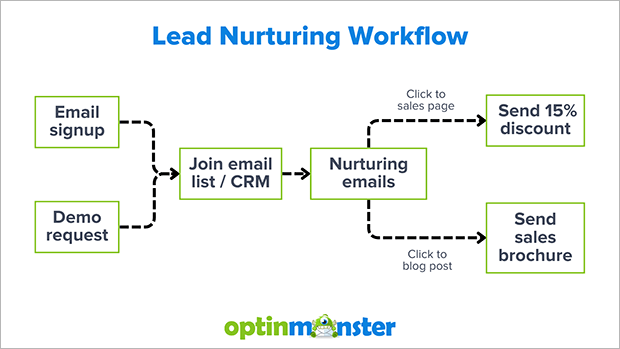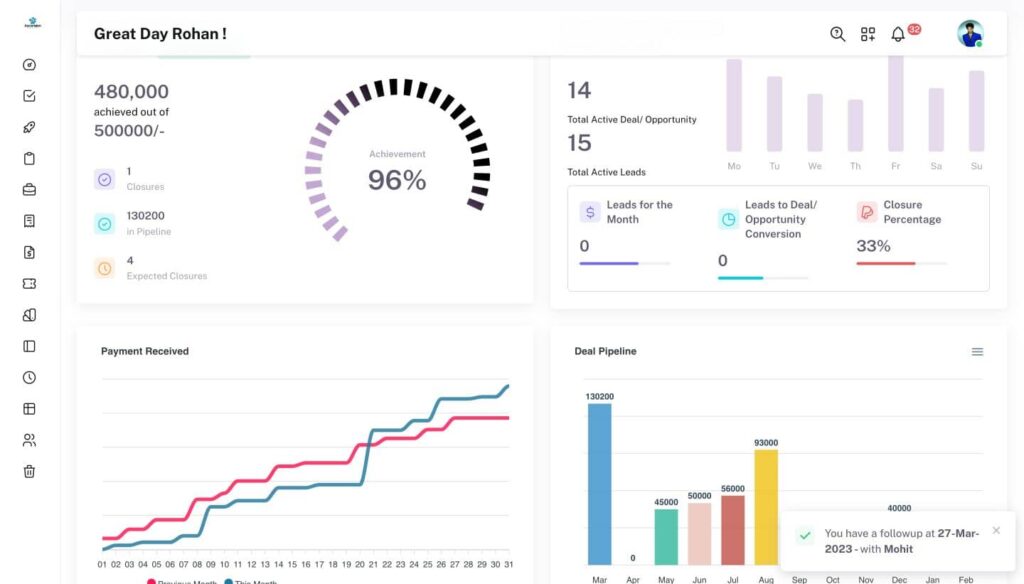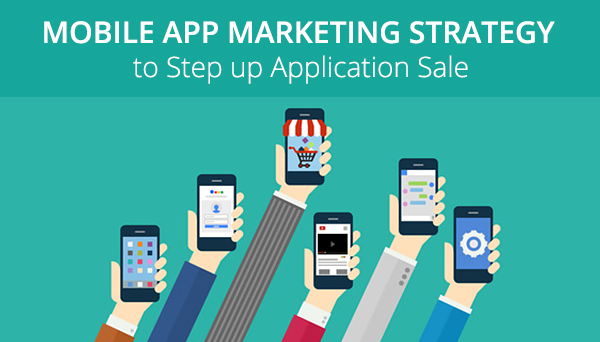
Unlocking the Power of CRM Marketing: A Deep Dive into Lead Nurturing
In today’s hyper-competitive business landscape, simply generating leads isn’t enough. You need a strategic approach to cultivate those leads, guiding them through the sales funnel until they become loyal customers. This is where CRM marketing and lead nurturing come into play. This comprehensive guide will delve into the intricacies of CRM marketing, with a particular focus on lead nurturing, providing you with the knowledge and tools to transform your marketing efforts and achieve explosive growth.
What is CRM Marketing? The Foundation of Customer Relationship Management
Customer Relationship Management (CRM) marketing is a strategy focused on building and maintaining strong, lasting relationships with your customers. It’s about understanding their needs, preferences, and behaviors to deliver personalized experiences that foster loyalty and drive sales. CRM marketing leverages CRM software to centralize customer data, track interactions, and automate marketing processes.
At its core, CRM marketing aims to:
- Enhance customer satisfaction
- Boost customer retention rates
- Increase customer lifetime value
- Improve sales efficiency
- Personalize marketing communications
By implementing a robust CRM marketing strategy, businesses can gain a significant competitive advantage by building deeper relationships with their customers, leading to increased sales and profitability.
The Role of Lead Nurturing in CRM Marketing: Guiding Prospects to Conversion
Lead nurturing is the process of building relationships with potential customers throughout their buyer journey. It involves providing valuable content, personalized interactions, and timely follow-ups to guide leads through the sales funnel, ultimately converting them into paying customers. It’s not just about sending generic emails; it’s about understanding your leads’ needs and providing them with the information and support they need at each stage of the buying process.
Lead nurturing is a crucial component of CRM marketing because it addresses the fact that most leads are not ready to buy immediately. By nurturing leads, you keep your brand top-of-mind, build trust, and establish yourself as a valuable resource. This increases the likelihood of a lead choosing your business when they are ready to make a purchase.
Key Benefits of CRM Marketing and Lead Nurturing
Implementing a well-defined CRM marketing strategy with a strong emphasis on lead nurturing offers a multitude of benefits, including:
- Increased Sales Conversions: By nurturing leads, you guide them through the sales funnel, increasing the likelihood of conversion.
- Improved Customer Retention: Personalized interactions and proactive communication foster loyalty and encourage repeat business.
- Enhanced Customer Satisfaction: Understanding customer needs and providing tailored experiences leads to higher satisfaction levels.
- Reduced Sales Cycle: Nurtured leads are often further along in the buying process, shortening the time it takes to close a deal.
- Better Marketing ROI: By focusing on qualified leads, you can optimize your marketing spend and achieve a higher return on investment.
- Increased Brand Awareness: Consistent communication and valuable content help build brand recognition and establish you as an industry leader.
These benefits highlight the importance of CRM marketing and lead nurturing for businesses of all sizes.
Crafting a Winning Lead Nurturing Strategy: A Step-by-Step Approach
Building a successful lead nurturing strategy requires a well-defined plan. Here’s a step-by-step guide to help you create and implement a winning strategy:
1. Define Your Target Audience and Buyer Personas
Before you can nurture leads effectively, you need to understand who they are. Create detailed buyer personas that represent your ideal customers. This involves researching their demographics, interests, pain points, and buying behaviors. The more detailed your buyer personas are, the better you can tailor your lead nurturing efforts to meet their specific needs.
Consider these aspects when developing your buyer personas:
- Demographics: Age, location, job title, income, education, etc.
- Psychographics: Values, interests, lifestyle, personality traits.
- Pain Points: What challenges are they facing?
- Goals: What are they trying to achieve?
- Buying Behavior: How do they research products or services? What influences their decisions?
By understanding your target audience, you can create content and messaging that resonates with them and addresses their specific needs.
2. Map the Customer Journey
The customer journey outlines the stages your leads go through as they interact with your business, from initial awareness to becoming a customer and beyond. Mapping the customer journey helps you understand the touchpoints where you can engage with leads and provide them with valuable information. This typically includes the following stages:
- Awareness: Leads become aware of your brand and its offerings.
- Interest: Leads show interest in your products or services.
- Consideration: Leads evaluate your offerings and compare them to competitors.
- Decision: Leads make a purchase decision.
- Retention: Customers continue to engage with your brand.
- Advocacy: Customers become brand advocates and recommend your business to others.
For each stage, identify the types of content and interactions that will be most effective in moving leads to the next stage.
3. Segment Your Leads
Not all leads are created equal. Segmenting your leads based on their demographics, behaviors, and engagement levels allows you to personalize your nurturing efforts. This ensures that you’re delivering the right message to the right person at the right time. Consider these segmentation criteria:
- Demographics: Industry, company size, job title, location.
- Behavior: Website activity, email opens and clicks, content downloads, social media engagement.
- Engagement: Level of interaction with your brand.
- Lead Source: Where the lead originated (e.g., website form, event, referral).
Segmentation enables you to create more targeted and relevant content, leading to higher engagement and conversion rates.
4. Create Compelling Content
Content is the fuel that powers your lead nurturing efforts. Develop a variety of content formats to cater to different preferences and stages of the customer journey. This may include:
- Blog Posts: Share valuable insights and address industry topics.
- Ebooks and Whitepapers: Offer in-depth information and establish your expertise.
- Case Studies: Showcase successful client stories and demonstrate the value of your offerings.
- Videos: Engage leads with visual content.
- Webinars: Host online presentations to educate and interact with leads.
- Infographics: Present complex information in an easy-to-understand format.
- Email Newsletters: Provide regular updates and valuable content.
Ensure your content is high-quality, informative, and relevant to your target audience. Optimize your content for search engines (SEO) to increase its visibility.
5. Design Automated Nurturing Workflows
Automation is key to scaling your lead nurturing efforts. Use CRM software to create automated workflows that trigger specific actions based on lead behavior and engagement. These workflows typically involve a series of emails, content offers, and other interactions designed to guide leads through the sales funnel.
Examples of automated workflows include:
- Welcome Series: Sends a series of emails to introduce new leads to your brand.
- Content Download Follow-up: Delivers additional content based on the lead’s download.
- Engagement-Based Nurturing: Responds to specific actions, such as clicking a link or visiting a specific page on your website.
- Re-engagement Campaigns: Reconnects with inactive leads.
Automated workflows save you time and ensure that leads receive timely and relevant information.
6. Personalize Your Communications
Personalization is critical to effective lead nurturing. Use your CRM data to tailor your messaging and content to each lead’s individual needs and preferences. This includes:
- Using the lead’s name in emails.
- Referring to their specific interests or pain points.
- Offering relevant content based on their past behavior.
- Segmenting your audience and tailoring your messaging accordingly.
Personalized communications demonstrate that you understand your leads and are invested in their success.
7. Track and Analyze Your Results
Monitoring and analyzing your lead nurturing efforts is essential to identify what’s working and what needs improvement. Track key metrics such as:
- Open Rates: The percentage of emails opened.
- Click-Through Rates: The percentage of clicks on links in your emails.
- Conversion Rates: The percentage of leads who convert into customers.
- Website Traffic: The number of visits to your website.
- Lead Quality: The quality of leads generated.
- Sales Revenue: The revenue generated from nurtured leads.
Use these metrics to optimize your campaigns, refine your content, and improve your overall performance. A/B testing different subject lines, content offers, and call-to-actions can help you determine what resonates best with your audience.
8. Integrate Your CRM with Other Marketing Tools
To maximize the effectiveness of your lead nurturing efforts, integrate your CRM with other marketing tools, such as:
- Email Marketing Platforms: For sending and tracking email campaigns.
- Marketing Automation Software: For creating and managing automated workflows.
- Social Media Platforms: For engaging with leads and promoting your content.
- Website Analytics: For tracking website traffic and user behavior.
Integration streamlines your marketing processes and provides a more holistic view of your leads and customers.
Choosing the Right CRM Software for Lead Nurturing
Selecting the right CRM software is crucial for successful lead nurturing. Consider these factors when choosing a CRM:
- Features: Look for a CRM that offers robust lead management, segmentation, automation, and reporting capabilities.
- Scalability: Choose a CRM that can grow with your business.
- Integration: Ensure the CRM integrates with your other marketing tools.
- Ease of Use: Select a CRM that’s user-friendly and easy to learn.
- Pricing: Consider your budget and the pricing plans offered by different CRM providers.
- Support: Check the level of customer support provided.
Popular CRM software options include:
- Salesforce: A comprehensive CRM platform with advanced features.
- HubSpot CRM: A free CRM with powerful marketing automation capabilities.
- Zoho CRM: A versatile and affordable CRM solution.
- Pipedrive: A sales-focused CRM designed for small businesses.
- Microsoft Dynamics 365: A comprehensive CRM and ERP solution.
Research and compare different CRM options to find the one that best suits your business needs.
Best Practices for Lead Nurturing in CRM Marketing
To maximize the effectiveness of your lead nurturing efforts, consider these best practices:
- Provide Value: Always focus on providing valuable content and information that addresses your leads’ needs.
- Be Consistent: Maintain a regular communication schedule to keep your brand top-of-mind.
- Be Patient: Lead nurturing is a long-term strategy. Don’t expect immediate results.
- Be Responsive: Respond promptly to lead inquiries and feedback.
- Use a Multi-Channel Approach: Engage leads across multiple channels, such as email, social media, and website.
- Test and Iterate: Continuously test and refine your campaigns based on your results.
- Align Sales and Marketing: Ensure that your sales and marketing teams are aligned and working together.
- Respect Privacy: Adhere to all privacy regulations and obtain consent before sending marketing communications.
- Use a Clear Call to Action: Guide leads on what to do next.
- Don’t Overwhelm: Avoid sending too many emails or bombarding leads with information.
By following these best practices, you can significantly improve the performance of your lead nurturing campaigns.
Measuring the Success of Your Lead Nurturing Efforts
Tracking the success of your lead nurturing efforts is crucial for optimizing your strategy and demonstrating the value of your marketing efforts. Key metrics to monitor include:
- Lead Conversion Rate: The percentage of leads who convert into customers.
- Sales Revenue Generated: The revenue generated from nurtured leads.
- Customer Lifetime Value (CLTV): The total revenue a customer generates over their relationship with your business.
- Cost Per Lead (CPL): The cost of acquiring a lead.
- Return on Investment (ROI): The return on your marketing investment.
- Email Open and Click-Through Rates: Measures the engagement with your email campaigns.
Use your CRM and marketing analytics tools to track these metrics and identify areas for improvement. Regularly review your performance and make adjustments to your strategy as needed.
Common Mistakes to Avoid in Lead Nurturing
Avoiding common mistakes can significantly improve the effectiveness of your lead nurturing efforts. Here are some pitfalls to watch out for:
- Sending Generic Emails: Failing to personalize your communications.
- Sending Too Many Emails: Overwhelming leads with excessive communication.
- Sending Irrelevant Content: Failing to tailor your content to the lead’s needs.
- Not Tracking Your Results: Failing to monitor and analyze your performance.
- Not Aligning Sales and Marketing: Disconnect between the sales and marketing teams.
- Ignoring Leads: Failing to follow up with leads in a timely manner.
- Focusing Only on the Short Term: Not having a long-term perspective.
- Using a Poorly Designed CRM: Failing to use the right CRM software.
By avoiding these mistakes, you can maximize the impact of your lead nurturing efforts.
The Future of CRM Marketing and Lead Nurturing
The landscape of CRM marketing and lead nurturing is constantly evolving. Staying ahead of the curve requires adapting to new technologies and trends. Some key areas to watch:
- Artificial Intelligence (AI): AI-powered CRM systems can automate tasks, personalize communications, and provide deeper insights into customer behavior.
- Hyper-Personalization: Leveraging data to create highly personalized experiences for each individual customer.
- Account-Based Marketing (ABM): Targeting specific accounts with personalized marketing campaigns.
- Video Marketing: Using video to engage leads and tell compelling stories.
- Mobile Optimization: Ensuring your marketing efforts are optimized for mobile devices.
- Data Privacy and Security: Prioritizing data privacy and security to build trust with customers.
Businesses that embrace these trends will be well-positioned to succeed in the future of CRM marketing and lead nurturing.
Conclusion: Transforming Leads into Loyal Customers
CRM marketing and lead nurturing are essential for building strong customer relationships and driving business growth. By understanding your target audience, creating compelling content, personalizing your communications, and tracking your results, you can transform leads into loyal customers and achieve lasting success. Embrace the strategies and best practices outlined in this guide, and you’ll be well on your way to mastering CRM marketing and lead nurturing.
Remember that consistency, patience, and a customer-centric approach are key to achieving long-term results. Continuously analyze your performance, adapt to changing trends, and strive to provide exceptional value to your leads and customers. The power of CRM marketing and lead nurturing lies in its ability to build meaningful relationships and drive sustainable business growth.

